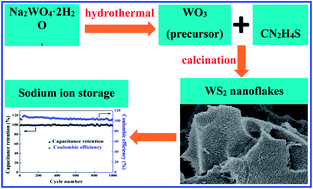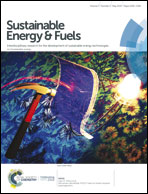Special layer-structured WS2 nanoflakes as high performance sodium ion storage materials†
Abstract
Electrode materials with a favourable microstructure and morphology are greatly advantageous for the electrochemical performances of sodium ion storage devices. An excellent lamellar structure is preferable to enhance the electrochemical performance of sodium ion storage materials. In this paper, layered wrinkled WS2 nanoflakes were synthesized via a hydrothermal approach followed by a high temperature sulfidation process. Benefiting from the particular nanoflake and layered structure that can provide more reactive sites and transmission channels for sodium ions, WS2 nanoflakes exhibit outstanding electrochemical performance when applied as a sodium ion storage material. They can deliver a stable specific capacity of 170 mA h g−1 after 100 cycles at 100 mA g−1. A WS2 nanoflakes//activated carbon (AC) sodium ion capacitor (SIC) was assembled and delivered a reasonable capacity of 47.2 F g−1 at 0.1 A g−1 and a maximum energy density of 132.7 W h kg−1 at a power density of 224.9 W kg−1. The special layered structure provides a pretty good indication that the fabrication of a favourable structure can efficiently enhance the electrochemical performances of electrode materials and the superior electrochemical performances indicate the great potential of applying WS2 nanoflake materials in sodium ion storage.



 Please wait while we load your content...
Please wait while we load your content...